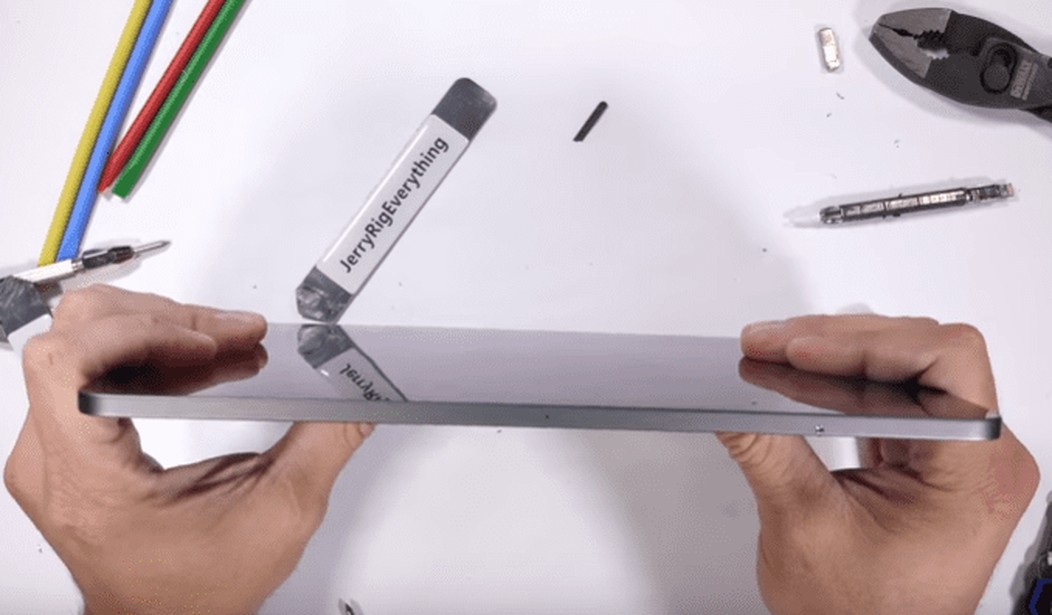Apple has earned the enviable reputation of producing products that are as close to perfect as possible, especially with regard to what you can see and touch, notably their fit and finish. Seams mesh precisely, the buttons work just right, and the surfaces are perfect. Apple has set the standard for paying attention to every little detail, right down to the way they package their cables, using easy-to-remove clear strips instead of wire twist ties. They agonize over every detail to make the best possible initial impression right out of the box. I can’t recall buying an Apple product that ever had a visible defect.
So, it was quite an unusual admission when Apple confirmed to The Verge that some of their new iPad Pros are being shipped with a slight bend or bow in the aluminum housing. What’s so unusual is that Apple never admits that their products are less than perfect.
Apple confessed to this problem after a number of customers complained, including on the MacRumors forums. Some report seeing the problem on new iPads right out of the box, while others say they’ve seen the problem get worse over time.
The company attributes the problem to a side effect of their manufacturing process, but they claim it shouldn’t worsen over time or affect the product’s performance. They explain that the bow is the result of a cooling process of the aluminum and plastic components during manufacturing. Apple insists that it’s not a defect, which avoids a recall of the product.
As one who has been involved with the design and manufacturing of hundreds of products, including several Apple products, let me translate: Apple has delivered a product that is designed to be flat. But, either as a result of the design itself, the choice of materials, or manufacturing processes, they are unable to produce the product as designed on a consistent basis and, therefore, have lowered their quality standards to less than what they have been producing for years.
This is a big issue that won’t go away just because Apple says it’s not a problem.
How could this have happened? My guess is that it’s the result of a design goal they’ve had for years that has caused problem after problem: an obsession with thinness. Apple makes their products thinner and thinner until things go wrong. That obsession has been responsible for the bending iPhone 6 Plus (Bendgate); for the thinner, weaker batteries that caused phones to prematurely shut down; and for the new, thinner keyboards that fail when a grain of sand gets under a key. All of these problems resulted in costly recalls.
This latest problem is not the first time the issue of fragility has arisen with these new products. In an overly severe test, and one probably done to get attention, JerryRigEverything posted a video showing him destroying an iPad Pro by easily bending it in half.
These new iPad Pros are very expensive, with some costing more than a MacBook — typically 20 percent higher than last year’s models. The iPad Pro costs anywhere from $800 to $1900, depending on the memory, screen size, and other features. Reports from users say all Pro models can exhibit this problem, but those with LTE cellular modems may be worse because the aluminum case has a plastic strip for the antenna.
While Apple appears to be willing to exchange bent iPads, many found new ones to have the same issue, while one person on the MacRumors forum complained that Apple stores wanted to charge $500 to fix it after his product stopped working. Meanwhile, Apple notes that it has not seen a higher-than-normal return rate for the new iPad Pro.
To some extent, Apple has brought this on itself. It sets the standard for products with a perfect fit and finish, brags about it, and charges higher prices for it. I doubt their customers will accept this explanation. No one wants to spend that much money for a product that doesn’t look perfect right out of the box.
In spite of Apple brushing this off, it is not normal. Apple clearly has quality control issues. It’s also unseemly that Apple allowed these products to be shipped, apparently expecting their customers to not notice. They are noticing and it’s become a black eye for Apple.









Join the conversation as a VIP Member